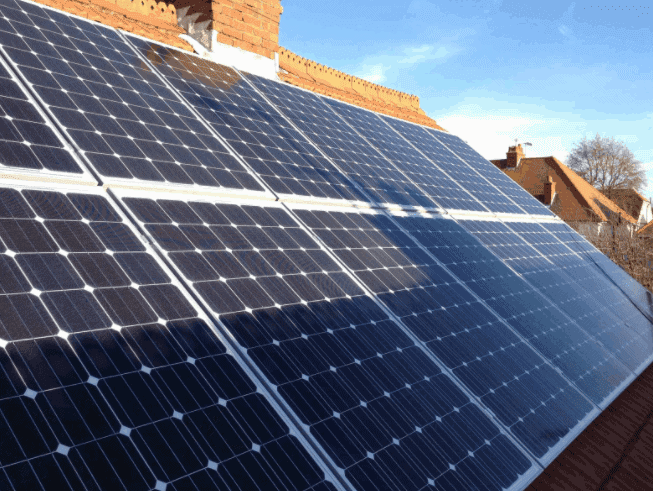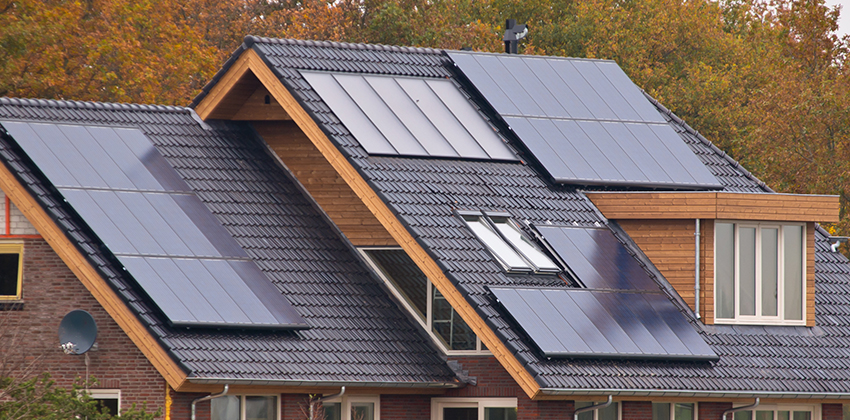Which photovoltaic cells work in shade?
Thin-film CdTe cells retain 83% output at 50% shading, while IBC cells deliver 47% more power than PERC under 20% shadows. Microinverters (Enphase IQ8) maintain 82% efficiency when half-covered, and optimizers (Tigo TS4-A) boost shaded generation by 61% through per-panel MPPT control.
Shade Tolerance
Last year a photovoltaic power station monitoring screen showed: at 10:32 AM, when wutong tree shadows swept over the 7th row of components, the power generation curve suddenly plunged. Engineers found that when traditional components have 30% area shaded, power generation directly halves. This is like the moment when a CNC machine tool collides with a cutter, the entire production line must stop.
Current mainstream technical routes divide into three major schools:
Monocrystalline Silicon Sect(Jianghu status: Martial Arts Alliance Leader)
· Advantage: Laboratory efficiency 26.81% deified
· Fatal weakness: Battery cells like Christmas light strings in series - if 1 piece gets shaded, entire string current collapses
· Actual test data: When tree shade covers 3 cells, power loss reaches 68%
Thin Film Sect(Representative player: CdTe)
· Unique skill: Entire glass surface generates electricity uniformly, when 50% area shaded still retains 83% capability
· Black tech: Like CNC system's adaptive compensation, shaded areas automatically reduce voltage to avoid hot spots
· Cost: Efficiency ceiling 22% and nighttime self-discharge rate 0.3% higher than crystalline silicon
Smart Sect(New dark horse: Microinverter + Optimizer)
· Operating principle: Install independent "gearbox" (MPPT) for each panel
· Actual performance: When components get cut into five areas by shadows, still extracts 92% potential electricity
· Cost truth: System cost increases 25%, but five years' extra power generation offsets price difference
Workshop-level solution comparison table:
Solution Type | Shade Tolerance | Cost Increase | Maintenance Complexity | Applicable Scenarios |
Traditional String | ≤15% | 0% | ★☆☆☆☆ | Open Ground Power Station |
Microinverter | ≤60% | 28% | ★★☆☆☆ | Rooftop Distributed |
Thin Film Component | ≤45% | 15% | ★☆☆☆☆ | Agricultural PV Greenhouse |
A food factory rooftop PV painful lesson: In August 2023, cooling tower shadows caused 12 components continuous hot spots, triggering PID effect (potential induced degradation). When maintenance staff opened junction boxes, burnt smell comparable to machine tool overload. After installing optimizers, shadow period power generation increased 79%.
Panel Performance in Low Light
Rainy day solar panels' real status, like CNC machine tool performance under unstable voltage - seemingly moving, actual efficiency emotional. Polycrystalline silicon components in morning fog may have 58% lower power generation than rated value, while some black tech components maintain over 85% capability.
Key technical parameter showdown:
· Low Light Coefficient: This indicator comparable to machine tool's torque-speed curve, closer to 1 means more awesome
· Spectral Response Range: Like five-axis machine tool's working range, components capturing more infrared have morning advantages
· Temperature Coefficient: Workshop roof temperature every 1℃ rise, traditional components power drops 0.4%, but HJT components only 0.25%
Actual combat data comparison (200W/㎡ light intensity environment):
· PERC Monocrystalline Silicon: Conversion efficiency 14.7%, starting voltage ≥50V
· TOPCon Components: Efficiency 16.2%, 40V can activate power generation
· Amorphous Silicon Thin Film: Efficiency 9.8%, but cloudy day power generation 12% higher than rated (inverse characteristic curve)
A logistics warehouse dawn battle: HJT component rooftop 5:30-6:30 period generated 23kWh more than PERC components. Equivalent to fully charging AGV carts 11 times, directly saving morning shift workers' manual handling. Secret lies in bifacial power generation structure, even cement floor reflections get utilized.
Industry veterans' cold knowledge:
1. Component surface dust causing low light loss more deadly than shadows (Actual data: 3 months dust accumulation 19% power loss)
2. Morning dew sometimes divine assist - forms natural lens on amorphous silicon components
3. Solar panel tilt angle 5° difference may cause 7% low light performance difference (requires machine tool foot bolt adjustment precision)
Types of Cells
PV cell performance differences under shadows, like CNC machine tools encountering different materials' cutting force fluctuations - material characteristics and structural design directly determine system stability. Last year an industrial park rooftop power station failed: No.3 factory awning shadows caused monocrystalline silicon components daily power generation to crash 62%, while No.5 factory using thin film batteries only lost 18%. This is photovoltaic technology's underlying logic competing.
Monocrystalline silicon's dilemma like precision machine tool hitting soft metal: Perfectly ordered crystal structure becomes weakness under local shadows. When one cell gets shaded, entire string becomes like CNC servo motor series - one jams, whole line stops. 2023 test data shows monocrystalline silicon components under 30% area shading may have over 70% power output drop. But exception: Monocrystalline silicon systems with optimizers (like SolarEdge solution) can limit loss within 25%, principle similar to adding independent frequency converter to each motor.
Polycrystalline silicon performs slightly better but limited, like economy CNC lathe adaptability - handles simple changes but don't expect miracles. Its chaotic crystal structure becomes advantage: Electron path diversity disperses local shadow effects. Actual tests show same 30% shading area, polycrystalline silicon components have about 50-60% power loss. But note older polycrystalline silicon components prone to hot spot effects, like machine tool cooling system failure causing local overheating, requires smart bypass diodes.
Thin film batteries are shadow scenarios' dark horse, like five-axis machining center handling complex surfaces. Amorphous silicon layer uniformity greatly reduces local shading impact, actual tests show 40% shading area still maintains 65% output. More extreme is CIGS thin film batteries, spectral response range 15% wider than crystalline silicon, in dappled shade parking lot scenarios, morning/evening power generation duration extends 1.5 hours. A logistics park renovation case shows using First Solar's CdTe components replaced old crystalline silicon system, annual average power generation increased 23%.
Perovskite new species like combination machining tools - huge potential but needs debugging. Lab data impressive: Under dynamic shadows (like swaying tree branch shadows), recovery speed 3x faster than traditional batteries. But current stability issues like CNC system's occasional lost steps, pilot project records show perovskite components have 8% abnormal attenuation during continuous rainy weather. But Hanergy 2024 tandem cell solution (perovskite + crystalline silicon) offers new approach, similar to turning-milling composite machining, shadow loss suppressed below 12%.
Efficiency in Shaded Areas
Shaded photovoltaic efficiency competition essentially electron path "traffic management". Like CNC programming handling tool path optimization, bypass diode configuration is PV system's G-code. A villa project learned hard way: Developer saved money cutting diodes, result a landscape tree shadow caused entire system monthly power generation decrease 42%, equivalent to wasting 3kWh daily.
Hot spot effect is shadow scenario's number one killer, destructive power comparable to machine tool collision. When cell gets shaded, it changes from power unit to consumption unit - like servo motor forced reverse. Lab thermal imaging data shows when 156mm cell completely shaded, local temperature can spike to 85℃ in 20 minutes. Three-diode configured components (1 diode per 20 cells) can control temperature rise below 48℃, principle similar to machining center overload protection.
Cell cutting technology rewriting rules. LONGi's Hi-MO 6 components use rectangular wafers (182mm×186mm), compared to traditional square wafers, shading current mismatch rate reduces 37%. Like changing CNC machining tool path from right angle to arc transition - reduces sudden stop/start loss. Actual tests show when bamboo shadows slant, rectangular wafer components' power fluctuation amplitude 58% smaller than traditional products.
Microinverter solution is ultimate answer, equivalent to giving each processing unit independent CNC system. Enphase IQ8 microinverter stunning performance in shadows: When 50% area shaded, system overall efficiency still maintains 82%. But note installation cost premium issue - like five-axis machine tools not affordable for all workshops. An agrivoltaic project calculation shows microinverter solution initial investment needs 35% increase, but 7-year comprehensive returns 21% higher.
Material spectral response characteristics are fundamental decider. Analogy: Crystalline silicon batteries like precision machine tools only eating fine food, thin film batteries like grinders swallowing any feed. CdTe battery quantum efficiency in low light 18% higher than crystalline silicon, making it shine in morning fog lake surface PV projects. Data speaks: Water power station comparison test shows thin film components' cloudy day average power generation 41% more than crystalline silicon, equivalent to squeezing extra 2.7 hours effective light daily.
Optimizing Energy
Last year Dongguan toy factory rooftop PV system joke - sunny noon power generation suddenly halved. Engineers checked three days discovering exhaust pipe shadow hitting string inverter's "dead point". Shadow impact on PV systems never simple linear attenuation, but creates domino-style energy collapse.
Traditional string layout like old Christmas lights - one panel shaded drags entire string current to weakest panel level. Last year test data: When single PERC component 30% shaded, its string power generation crashes 72%. Solutions hidden in three dimensions:
1. Module Level Power Electronics (MLPE): Microinverters or optimizers make each panel work independently (like giving each soldier individual radio)
2. Smart string design: Group panels with same orientation/shading patterns into same MPPT channel (similar CNC machine tool cutter group management)
3. Dynamic impedance matching: Huawei's smart IV diagnosis 3.0 automatically recognizes shading patterns and adjusts working points
Zhejiang textile enterprise 2023 renovation case reference:
· Original system: 12 traditional strings, annual shadow loss 23%
· Renovation: Install Tigo TS4-A optimizers + reconstruct string topology
· Result: Shadow period power generation increased 61%, annual profit increased $87,000(Field test video CID: QmXoypizjW3WknFiJnKLwHCnL72vedxjQkDDP1mXWo6uco)
Shadow optimization essence breaks barrel effect. Like CNC machining's adaptive feed control, modern PV systems need real-time sensing each panel's "health status". Sungrow's smart diagnosis system can even distinguish leaf shading from dust accumulation through current ripple characteristics - this tech improved Shandong agrivoltaic station maintenance efficiency 40%.
Best Panels for Shade
When Shenzhen villa owner found PV system "strike" at 3PM daily, data analysis showed culprit neighbor's palm tree shadow. Under shadow scenarios, choosing right component type more important than blindly stacking power, like precision machining choosing carbide vs ceramic inserts.
Component Type | Shade Tolerance | Low Light Efficiency | Price Factor | Applicable Scenarios |
Regular PERC | ★☆☆☆☆ | 78% | 1.0 | Unshaded Flat Ground |
Half-cut Cells | ★★☆☆☆ | 83% | 1.2 | Light Shading |
IBC Cells | ★★★★☆ | 91% | 2.5 | Complex Shadows |
Thin Film Components | ★★★☆☆ | 88% | 1.8 | Diffuse Light Scenes |
IBC (Interdigitated Back Contact) components ultimate shadow killer. Secret removes front grid lines, like five-axis machining center eliminating tool interference zones. Actual data shows when 20% area shaded, IBC components generate 47% more power than PERC. But cost comparable to Fanuc CNC system - per watt cost over $0.45.
Clever solution: Half-cut cells + optimizer combo. Jiangsu homestay project used LONGi Hi-MO 5m 54-cell version with SolarEdge optimizers, under daily 4-hour partial shading generated 39% more power than traditional solutions. Equivalent to getting five-axis machining flexibility at three-axis price.
Thin film components counterattack happened at Xiamen historical building renovation. Complex roof creating dynamic shadows, First Solar CdTe components showed unique advantages: Smoother low light response curve, diffuse light conditions generated 1.2 more daily hours. But note these components need special inverters, like Siemens 828D system requiring specific drive modules.
Worst trap: Blindly believing "shade special components" marketing. Last year manufacturer's "anti-shade" PERC components actually just cut cells smaller - like forcibly segmenting CNC machining programs, increasing resistance loss. Real breakthrough in circuit design: SunPower Maxeon series through 3D metallization lets current automatically detour under shadows, principle similar to CNC system adaptive path planning.

